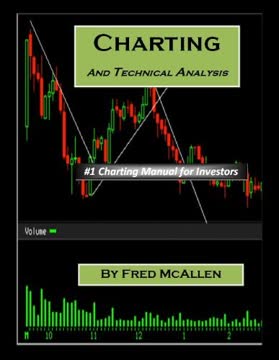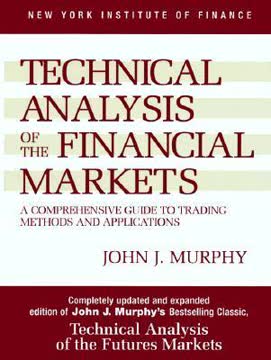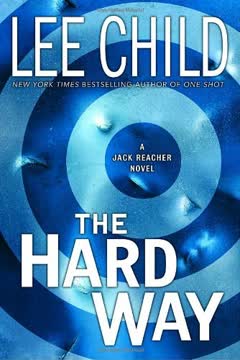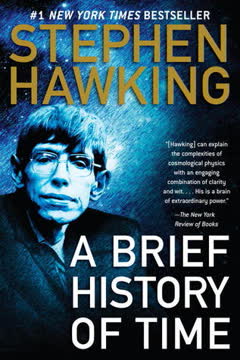Key Takeaways
1. Candlestick Charts: Visualizing Market Psychology
Japanese candlesticks offer a quick picture into the psychology of short-term trading, studying the effect, not the cause.
Visual data representation. Candlestick charts, originating from Japan, provide a visually intuitive way to represent price movements, using "candles" to depict the open, high, low, and close prices for a given period. The body of the candle represents the range between the open and close, while the shadows (or wicks) indicate the high and low prices reached during that period. This visual clarity allows traders to quickly grasp the market's sentiment.
Decoding market sentiment. Unlike traditional bar charts, candlesticks emphasize the relationship between the open and close prices, offering insights into the balance between buying and selling pressure. A white (or hollow) body signifies a higher close than open, indicating bullish sentiment, while a black (or filled) body signifies a lower close than open, indicating bearish sentiment.
Beyond data display. Candlestick charting goes beyond simply displaying data; it provides a framework for understanding the psychology driving price movements. By recognizing specific candlestick patterns, traders can gain a deeper understanding of the market's short-term sentiment and potential future direction.
2. Mastering the Language of Single Candle Lines
Each type of candle line has a unique name and represents a possible trading scenario for that day.
Building blocks of analysis. Single candle lines, also known as yin and yang lines, form the foundation of candlestick pattern analysis. Each line represents a specific trading scenario and provides valuable information about the day's price action.
Key single candle lines:
- Marubozu: Long body with no shadows, indicating strong bullish or bearish momentum
- Spinning Tops: Small body with long upper and lower shadows, representing indecision
- Doji: Open and close prices are equal, signaling uncertainty and potential trend change
Understanding market dynamics. By studying the characteristics of single candle lines, traders can gain insights into the interplay between buyers and sellers and the potential shifts in market sentiment. These lines serve as building blocks for recognizing more complex candlestick patterns.
3. Reversal Patterns: Spotting Trend Changes
Japanese candlestick analysis is a valid form of technical analysis and should be treated as such.
Identifying potential turning points. Reversal patterns, formed by one or more candlesticks, signal a potential change in the prevailing trend. These patterns can help traders anticipate market turning points and position themselves for profitable trades.
Examples of reversal patterns:
- Hammer and Hanging Man: Single candlestick patterns with long lower shadows and small bodies, indicating potential bottoms or tops
- Engulfing Pattern: Two-candlestick pattern where the second candle's body completely engulfs the first, signaling a strong reversal
- Morning Star and Evening Star: Three-candlestick patterns that indicate potential bottoms or tops with a "star" (small body) in the middle
Confirmation is key. While reversal patterns can provide valuable insights, it's crucial to seek confirmation from other technical indicators or price action before making trading decisions. This helps to avoid false signals and increase the probability of success.
4. Continuation Patterns: Riding the Momentum
Previous price movement helps to determine only the pattern, not its ability to foresee or anticipate future price movement.
Identifying pauses in the trend. Continuation patterns, unlike reversal patterns, suggest that the current trend is likely to continue. These patterns can help traders identify temporary pauses in the market and position themselves to profit from the continuation of the trend.
Examples of continuation patterns:
- Rising Three Methods and Falling Three Methods: Five-candlestick patterns that show a pause in the trend followed by a resumption of the original direction
- Separating Lines: Two candlesticks of opposite color with the same opening price, indicating a continuation of the prevailing trend
Strategic entry points. By recognizing continuation patterns, traders can identify strategic entry points to add to their existing positions or initiate new trades in the direction of the trend. These patterns provide opportunities to capitalize on the market's momentum.
5. Sakata's Method: A Holistic Approach
Technical analysis is, after all, as much art as it is science. But too many analysts have a mathematical blind spot, and I blame that on computers.
Ancient wisdom for modern markets. Sakata's Method, developed by Munehisa Homma, provides a holistic approach to market analysis that combines candlestick patterns with broader market principles. This method emphasizes the importance of understanding market psychology and the interplay between various factors influencing price movements.
Key components of Sakata's Method:
- Three Mountains (San-zan): Identifying major tops in the market
- Three Rivers (San-sen): Recognizing potential bottoms
- Three Gaps (San-ku): Using gaps in price action to time entry and exit points
- Three Soldiers (San-pei): Recognizing strong trends with consecutive candlesticks
- Three Methods (San-poh): Identifying pauses in market action
Combining art and science. Sakata's Method recognizes that market analysis is both an art and a science, requiring a blend of technical skills and intuitive understanding. By incorporating these principles, traders can gain a more comprehensive perspective on the market.
6. Filtering: Enhancing Reliability with Western Tools
Japanese candlestick analysis used with other technical/market indicators will improve your performance and understanding of the markets.
Combining Eastern and Western techniques. Candlestick pattern filtering involves using Western technical indicators to confirm or refine candlestick signals, improving their reliability and accuracy. This approach combines the visual insights of candlesticks with the quantitative analysis of Western tools.
Popular filtering indicators:
- Relative Strength Index (RSI): Measures the magnitude of recent price changes to evaluate overbought or oversold conditions
- Stochastics: Compares the closing price to its price range over a given period
- Moving Averages: Smooth out price data to identify trends
Reducing false signals. By requiring confirmation from other indicators, candlestick filtering helps to reduce false signals and increase the probability of successful trades. This approach provides a more robust and reliable trading strategy.
7. Trading with Candlesticks: A Practical Guide
Good journalists are supposed to maintain an open mind about the stories they cover... And successful financial reporters should avoid being either bullish or bearish.
Candlesticks for traders. Candlestick charting is more valuable to traders than to investors because the short-term strength of candlesticks merges well with the cyclical nature of pattern trading.
Key considerations for traders:
- Identify pivot points: Recognize key support and resistance levels
- Read the message: Understand the sentiment and momentum conveyed by candlestick patterns
- Confirm with other indicators: Use Western technical tools to validate candlestick signals
- Manage risk: Implement appropriate stop-loss orders and position sizing strategies
Trading is opportunistic. Trading is anticipating a potential price action, positioning to enter the early stage of the trade, adding to it as it develops, and then exiting as it matures and sets up a reversal. Trading also involves lots of reversals, and this is where candles shine the brightest.
8. The Importance of Location and Context
Candle Patterns need to be defined within parameters that people can understand and use in their everyday analysis.
Location, location, location. The effectiveness of candlestick patterns depends heavily on their location within the broader market context. A signal that appears at a key support or resistance level is far more significant than one that occurs in the middle of a trend.
Contextual analysis:
- Identify the prevailing trend: Determine whether the market is trending up, down, or sideways
- Recognize key support and resistance levels: Identify areas where prices have previously reversed
- Consider the proximity to major events: Factor in upcoming news releases or economic data that could impact the market
Interpreting signals in context. By considering the location and context of candlestick patterns, traders can filter out noise and focus on the most relevant and reliable signals. This approach leads to more informed trading decisions.
9. Understanding the Message: Beyond Pattern Recognition
An attempt to take the subjectivity out of Japanese candlesticks analysis will be primary thrust of this book.
Decoding the language of candles. While memorizing candlestick patterns is helpful, it's even more important to understand the underlying message they convey. This involves recognizing the sentiment, emotion, and momentum reflected in the shape and color of the candlesticks.
Key elements of candlestick interpretation:
- Body size: Indicates the strength of the buying or selling pressure
- Shadows: Reflect the volatility and range of price movement
- Gaps: Signal sudden shifts in market sentiment
Beyond rote memorization. By focusing on the message rather than simply memorizing patterns, traders can develop a deeper understanding of market dynamics and make more informed trading decisions.
10. Integrating Candlesticks with Western Techniques
Japanese Candlesticks are the perfect form of technical analysis for the 1990s... It will be a period that embraces a kind of hybrid Eastern philosophy and Western practicality without all the New Age hocus-pocus.
Combining the best of both worlds. The most effective approach to market analysis involves integrating Japanese candlestick charting with Western technical techniques. This allows traders to leverage the visual insights of candlesticks with the quantitative analysis of Western tools.
Strategies for integration:
- Use Western chart patterns to identify key support and resistance levels
- Employ candlestick patterns to confirm or refine entry and exit points
- Utilize technical indicators to filter out false signals and identify overbought or oversold conditions
A holistic approach. By combining Eastern and Western techniques, traders can gain a more comprehensive and nuanced understanding of the market, leading to more profitable trading decisions.
Last updated:
FAQ
1. What is "Candlestick Charting Explained" by Gregory L. Morris about?
- Comprehensive candlestick guide: The book is a thorough manual on Japanese candlestick charting, covering pattern identification, philosophy, and practical trading applications.
- Market psychology focus: It explains how candlestick patterns visually represent trader sentiment and short-term market psychology, offering insights not available in other charting methods.
- Statistical validation: Gregory L. Morris supports candlestick analysis with rigorous statistical testing, using millions of days of market data to validate pattern effectiveness.
- Integration of East and West: The book bridges traditional Japanese techniques with Western technical analysis, providing a holistic approach to market interpretation.
2. Why should I read "Candlestick Charting Explained" by Gregory L. Morris?
- Evidence-based approach: The book’s findings are based on over 7 million days of market data, lending credibility to its conclusions about candlestick patterns.
- Bridges analysis and action: It teaches readers how to turn technical analysis into disciplined trading, addressing the psychological challenges of fear, greed, and hope.
- Practical trading tools: Readers gain actionable methods for pattern recognition, filtering, and integrating candlesticks with other technical indicators.
- For all experience levels: Both professional and individual traders can benefit from its clear explanations and practical advice.
3. What are the fundamental components of Japanese candlestick charts as explained by Gregory L. Morris?
- Candlestick structure: Each candlestick displays the open, high, low, and close, with the real body showing the difference between open and close, and shadows indicating price extremes.
- Types of candlesticks: Key single candle lines include Marubozu (no shadows), Spinning Tops (small bodies, long shadows), and Doji (open and close nearly equal), each reflecting unique market psychology.
- Visual advantage: Candlesticks offer a clearer, more immediate interpretation of price action and sentiment than standard bar charts.
- Data requirements: The book emphasizes the use of daily open, high, low, and close prices, with special handling for missing data to preserve gap information.
4. How does "Candlestick Charting Explained" by Gregory L. Morris define and validate candlestick pattern reliability?
- Pattern frequency and accuracy: Candlestick patterns appear about every 9 trading days, with reversal patterns making up 74% of occurrences; some patterns exceed 60% accuracy.
- Statistical analysis: The book provides detailed statistics on pattern frequency, win rates, average gains/losses, and net profit/loss ratios.
- Prediction intervals: Short-term predictions (1-5 days) are more reliable than longer-term ones, and knowing the trend improves pattern success rates.
- Confirmation categories: Patterns are classified by their need for confirmation, helping traders gauge reliability before acting.
5. What are the most important candlestick patterns and their messages in "Candlestick Charting Explained"?
- One-day patterns: Hammer, Hanging Man, Doji Star, and Marubozu signal indecision, reversal, or strong momentum, depending on body and shadow characteristics.
- Multi-day patterns: Engulfing, Harami, Morning Star, and Three Line Strike indicate stronger or confirmed reversals or continuations.
- Location matters: The significance of any pattern depends on its position relative to support and resistance levels.
- Pattern families: Learning patterns in groups helps traders recognize variations and related signals more effectively.
6. What is Sakata’s Method and its significance in "Candlestick Charting Explained" by Gregory L. Morris?
- Historical foundation: Sakata’s Method originates from 18th-century Japanese rice trading and forms the basis of candlestick analysis.
- Rule of three: It centers on formations like Three Mountains, Three Rivers, Three Gaps, Three Soldiers, and Three Methods, each representing specific market behaviors.
- Philosophical approach: The method combines price action with investor psychology, emphasizing trend continuation, pauses, and reversals.
- Structured interpretation: Sakata’s Method provides a systematic way to read and apply candlestick formations in trading.
7. How does Gregory L. Morris recommend identifying and confirming trends before using candlestick patterns?
- Trend identification first: The book stresses the importance of determining the prevailing trend before interpreting candlestick patterns.
- Use of moving averages: Short-term exponential moving averages (e.g., 10-day) are recommended for trend determination.
- Pattern context: The meaning and reliability of a pattern depend heavily on whether it appears in an uptrend, downtrend, or sideways market.
- Confirmation signals: Traders are advised to wait for confirmation from subsequent price action or technical indicators before acting on patterns.
8. What is candlestick filtering and how does Gregory L. Morris suggest using it in "Candlestick Charting Explained"?
- Filtering concept: Candlestick filtering involves using technical indicators (like RSI, Stochastics, MACD) to confirm candlestick signals and reduce false positives.
- Improved results: Filtering reduces the number of trades but increases average gain per trade, enhancing overall profitability.
- Practical application: The book provides case studies showing how filtering with indicators outperforms using candlesticks or indicators alone.
- Risk management: Filtering helps manage risk by avoiding premature or weak signals.
9. How does "Candlestick Charting Explained" by Gregory L. Morris integrate candlestick analysis with Western technical analysis?
- East-West synergy: Candlesticks reveal short-term sentiment, while Western charts highlight support, resistance, and longer-term patterns.
- Complementary tools: Combining both methods gives a fuller picture of market behavior and improves entry and exit timing.
- Confirmation at pivot points: Candlesticks are especially useful for reading trader attitude at key market turning points and confirming Western signals.
- Not a standalone system: The book cautions against relying solely on candlesticks, advocating for a blended approach.
10. What is CandlePower and how does volume play a role in candlestick analysis according to Gregory L. Morris?
- CandlePower method: CandlePower incorporates volume into candlestick analysis by varying candle width according to trading volume.
- Volume as confirmation: High volume on reversal or continuation days strengthens the reliability of candlestick signals.
- Volume patterns: Large volume often indicates strong conviction behind a move, while low volume may signal weak or unreliable patterns.
- Enhanced signal reliability: Integrating volume helps traders better assess the strength of price movements.
11. How does "Candlestick Charting Explained" by Gregory L. Morris address the role of human psychology in candlestick patterns?
- Trader emotions visualized: Candlestick patterns capture the collective psychology of market participants, including fear, greed, and indecision.
- Patterns as psychological snapshots: Each pattern reflects trader sentiment and decision-making at critical market moments.
- Trend context is key: Understanding the preceding trend is essential, as it sets the psychological stage for pattern development.
- Behavioral insights: The book emphasizes that candlesticks offer a unique window into short-term market psychology.
12. What are the practical trading tips and best practices from "Candlestick Charting Explained" by Gregory L. Morris?
- Use confirmation wisely: Some patterns require confirmation (e.g., Harami), while others (e.g., Engulfing) can be acted on more decisively.
- Combine methods: Integrate candlestick analysis with other technical and fundamental tools for a comprehensive trading strategy.
- Manage risk: Use filtering and confirmation to reduce false signals and avoid overtrading.
- Pattern recognition skills: Study patterns in families and practice disciplined application to improve recall and trading performance.
Review Summary
Readers highly praise Candlestick Charting Explained for its practical approach to technical analysis. Many consider it the best book on candlestick charts, offering concise and applicable information. The performance tables for chart patterns are particularly valued. Some readers find certain sections statistically heavy, but overall, the book is seen as an essential reference for those in financial markets. It has significantly improved trading skills for many. While some information may be outdated in older editions, the core concepts remain relevant and useful.
Similar Books
Download PDF
Download EPUB
.epub digital book format is ideal for reading ebooks on phones, tablets, and e-readers.










